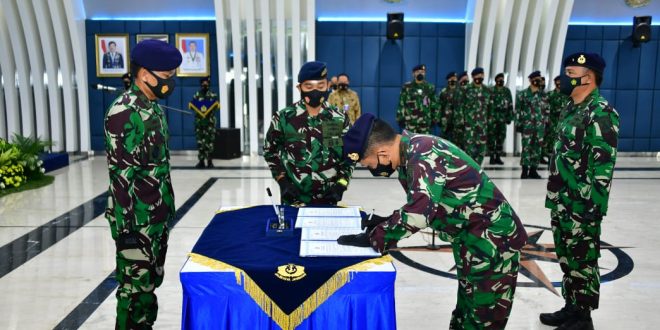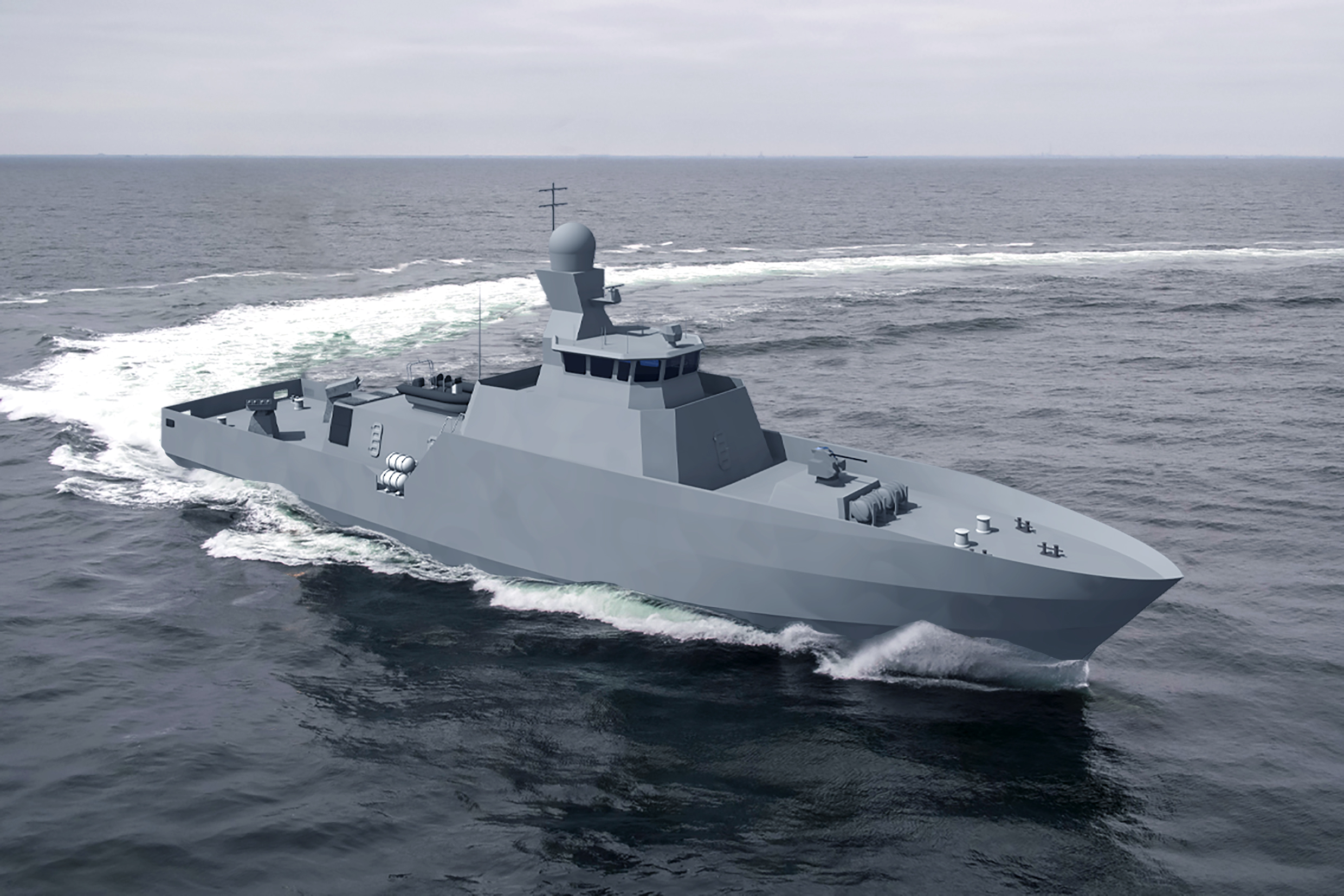Small warships for Ukraine to be built in Scotland
As part of the Ukrainian Naval Capabilities Enhancement Programme (UNCEP) agreement signed with the UK government in October 2020, Babcock will build at least one, probably two Fast Inshore Attack Craft (FIAC) for Ukraine at their Rosyth facility. Here we look at this programme and Babcock’s other moves in the naval export market.
Fast attack
We
first reported in September 2020 that the UK government had agreed to assist Ukraine in regenerating its navy. Initial rumours suggested that FIAC based on the Vosper Thornycroft-designed Barzan class vessels could be built in the UK, possibly at the Appledore shipyard (now owned by Harland and Wolff). The UNCEP subsequently appointed Babcock as the designated prime industrial partner for Ukraine and they will bring in SMEs to contribute as needed.
Industry sources suggested that BAE Systems, who had inherited the IP for the Barzan design, was willing to donate it on an ‘as seen only’ basis to other UK shipbuilders. However, Babcock assessed the Barzan as unsuitable, not least due to the drawbacks of its aluminium hull. A former Babcock subsidiary, FBM Marine (acquired in 2000) had a portfolio of small-medium size fast patrol ship designs under the ‘Protector’ brand developed in the late 1990s. A total of eight FIAC will be built for Ukraine will be based on a modified and updated 50-metre Protector design (P50-U).
UNCEP is based on UK export finance in the form of a loan to the Ukrainian government and will include British-made equipment where possible and Ukrainian and other foreign content as required. The precise weapon and sensor fit has yet to be determined but P50-U will be heavily armed for her size, intended to provide a short-range asymmetric deterrent to the much larger warships of Ukraine’s threatening neighbour. It will likely feature a small-medium calibre main gun, 8 canister-launched anti-ship missiles and a lightweight surface to air missile system.
(Image: Babcock)
More work for Rosyth
The lead ship of the P50-U FIACs will be built at Babcock Rosyth facility in the Syncrolift Hall (Building 18 – also known as the Sandown Minehunter Refit Facility) adjacent to the newly erected Type 31 shipbuilding hall. This will allow the project to be de-risked before the remaining 6 or 7 vessels are built In Ukraine.
The automated robotic panel line which has been installed as part of the investment for the Type 31 programme will also be used in the project and the craft will be assembled in pre-outfitted sections. The existing infrastructure in the Hall including overhead gantry cranes can readily support modular construction of what will probably be 500-600 tonne vessels. The syncrolift can also be used to lower the completed hull into the water.
Besides the FIAC project, Babcock also has the contract to improve naval shore facilities in Ukraine and refurbish two decommissioned RN minehunters (ex-HMS Ramsey and Blyth) before their transfer to the Ukrainian navy. The MCMVs will receive upgrades to their predominantly UK equipment fit in Rosyth before being handed over to their new owners. This is a similar package to the three ex-RN Sandown Class MCMV sold to Estonia (2007-8) and refurbished before handover, the three ships were also recently refitted and upgraded in Rosyth.
Arrowhead-140 goes global
Slightly overshadowed by the AUKUS submarine deal, on 16th December at DSEI, Babcock celebrated its first export success with Arrowhead-140. Indonesia formally signed a deal to license the design for two frigates to be constructed by PT PAL in Surabaya. The licensing deal is relatively modest but the real financial value for Babcock will be in the through-life support contract and some UK manufactured content in the ships.
Babcock pay a small royalty to OMT, the Danish company that designed the original Iver Huitfeldt class frigate that the Arrowhead-140 is based on.
John Howie, Babcock’s Chief Corporate Affairs Officer told Navy Lookout that “the Danish have been enthusiastic and helpful in supporting the export effort”. Arrowhead is not just ‘Huitfeldt plus’ and there have been significant modifications to meet RN standards, make use of British components and a large contribution from Thales UK.
Arrowhead 140 is also a contender for the Polish frigate requirement and Babcock believe their competitive advantage lies in the size and flexibility of the platform as the Poles seek a more heavily armed ship than Type 31.
Arrowhead was a late entry into the
Hellenic navy’s frigate competition which is a multi-faceted project as the Greeks seek a partner to provide more than just warships. There are four aspects to their requirements. The central pillar is a call for 4 frigates to be built in-country and there is strong competition from Europe and the US but the low price point of Arrowhead may be a big advantage. In the interim, their Hydra class MEKO frigates need to be refurbished and Babcock already has experience with these platforms, working on the Australian MEKO frigates. The Greeks also want help to rebuild their warship and commercial shipbuilding and repair capacity. Greeks interests own a quarter of the world’s merchant ships and the regeneration and a partnership in domestic yards has great revenue potential in the long term.
Finally, the Hellenic Navy has an urgent requirement for ‘interim’ frigates. Sadly for the UK, the cupboard is rather bare with just 2 possible candidates. HMS Montrose will return to the UK in 2022 after 3 intense years in the Gulf to be decommissioned. She has previously undergone LIFEX refit and Babcock Devonport would be well placed to refit her for further service. HMS Monmouth has been stripped of equipment is in a very poor material state, currently in the hands of DRSO in Portsmouth awaiting her fate. Whether Greece would be willing to pay for her to undergo a major refit that would probably cost at least £50M and take 2 years is doubtful. One remote possibility is that Monmouth’s refit could be done in Greece with Babcock assitance and used as a ‘pathfinder project’ to regenerate local skills.
While the French are
terribly upset about the cancellation of their Attack-class submarine contract with Australia, it is worth noting that UK naval exports had almost become extinct in the 21st century. State-subsidised shipyards in France and other European companies have enjoyed a sustained run of successes in competitions, building warships where Britain was mostly not even a contender.
In the last two decades, the paltry total of new warships built in Britain for overseas customers comprises 4 OPVs for the Irish Navy (2018), 3 OPVs for Brazil (2013), 3 Khareef-class corvettes for Oman (2011) and 3 light frigates for Brunei (2002). The export of the Type 26 design to Australia and Canada was the start of a revival and UK industry will benefit considerably from supplying equipment for the vessels even being built overseas. All three navies will also benefit from economies of scale in purchasing equipment, commonality when operating together and shared experience and training opportunities. Further successes in licensing the Arrowhead design to other navies would have similar advantages.
Small warships for Ukraine to be built in Scotland | Navy Lookout







